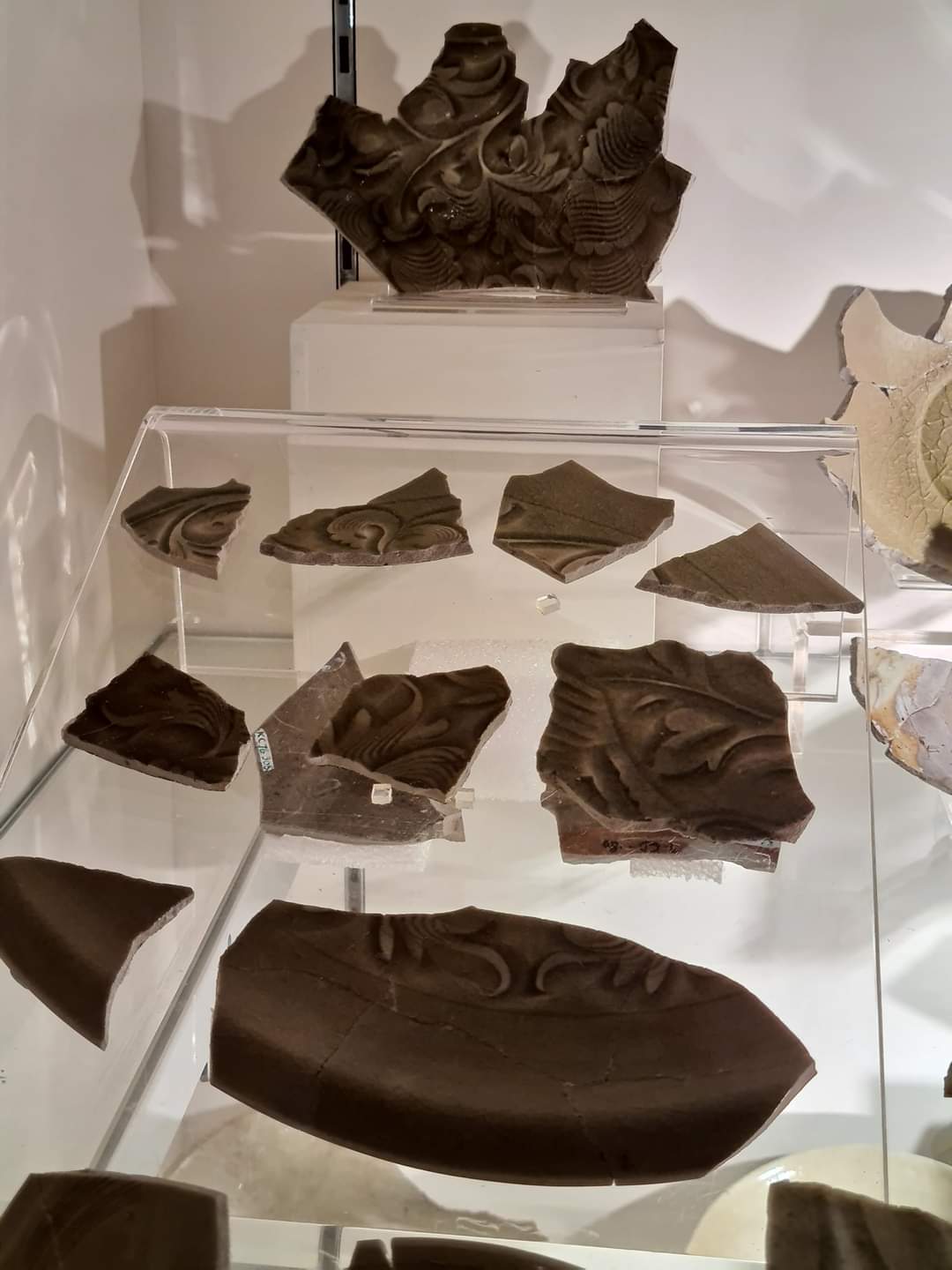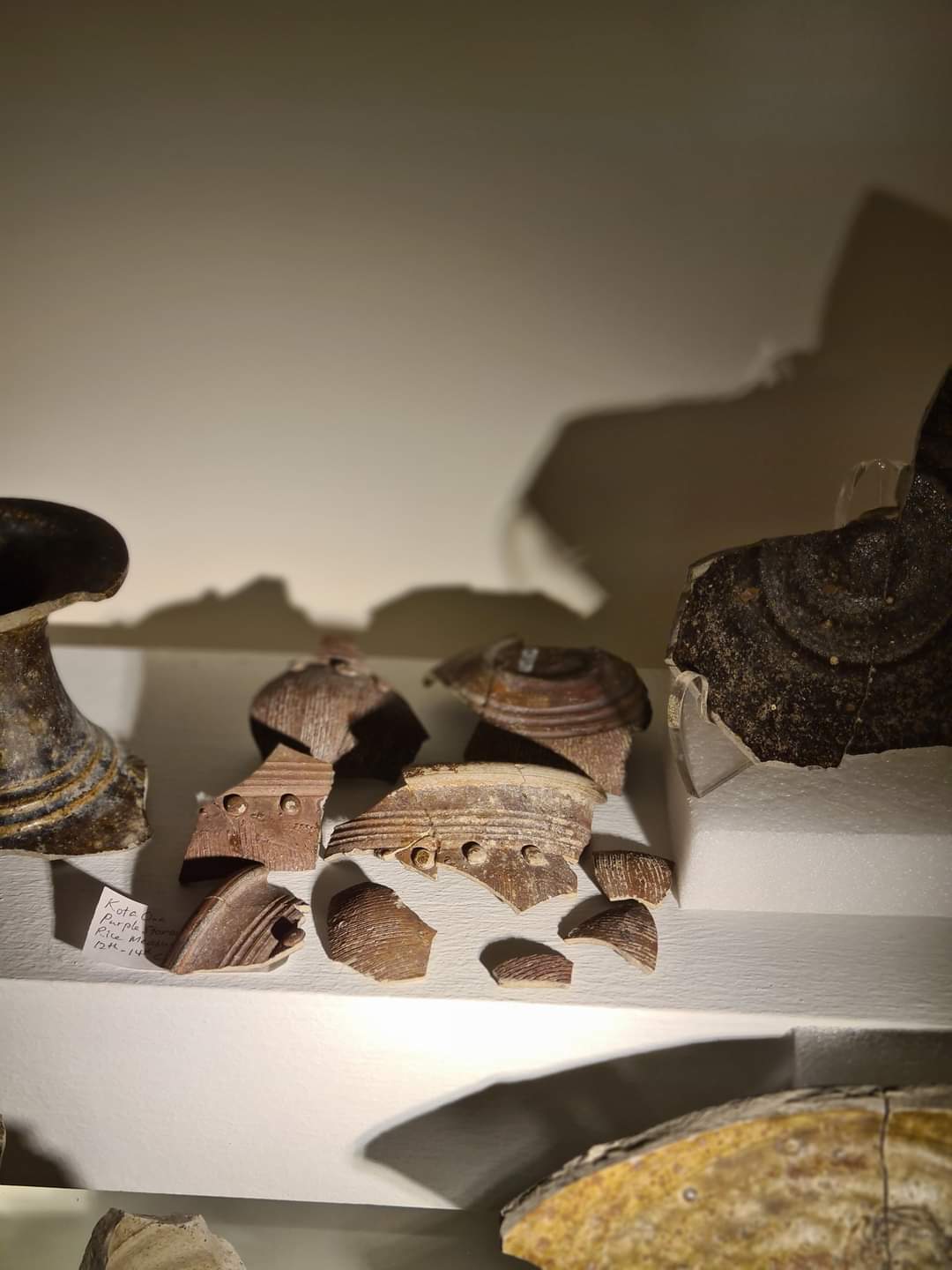Song/Yuan Ceramics from the Kota Cina Site in Sumatra
The NUS Museum holds a collection of ceramic sherds excavated by Prof. John Miksic from the Kota Cina site in Sumatra during the 1970s. Located in Northeast Sumatra, Kota Cina is a village situated near a mangrove swamp at the mouth of the Deli River. Archaeological excavations conducted by Prof. Miksic and Dr. Edwards McKinnon uncovered a significant quantity of Chinese and local ceramics.
According to Prof. Miksic, the Chinese ceramic sherds found at the site date from approximately 1070 to 1260 A.D., spanning the Late Northern Song to Late Southern Song periods. Kota Cina is a crucial archaeological site that provides valuable insights into the types of Chinese ceramics exported to Sumatran markets. The site’s name suggests the likely presence of a significant Chinese immigrant community. It may have functioned as an important port, with its hinterland supplying key Chinese imports such as camphor and gold.
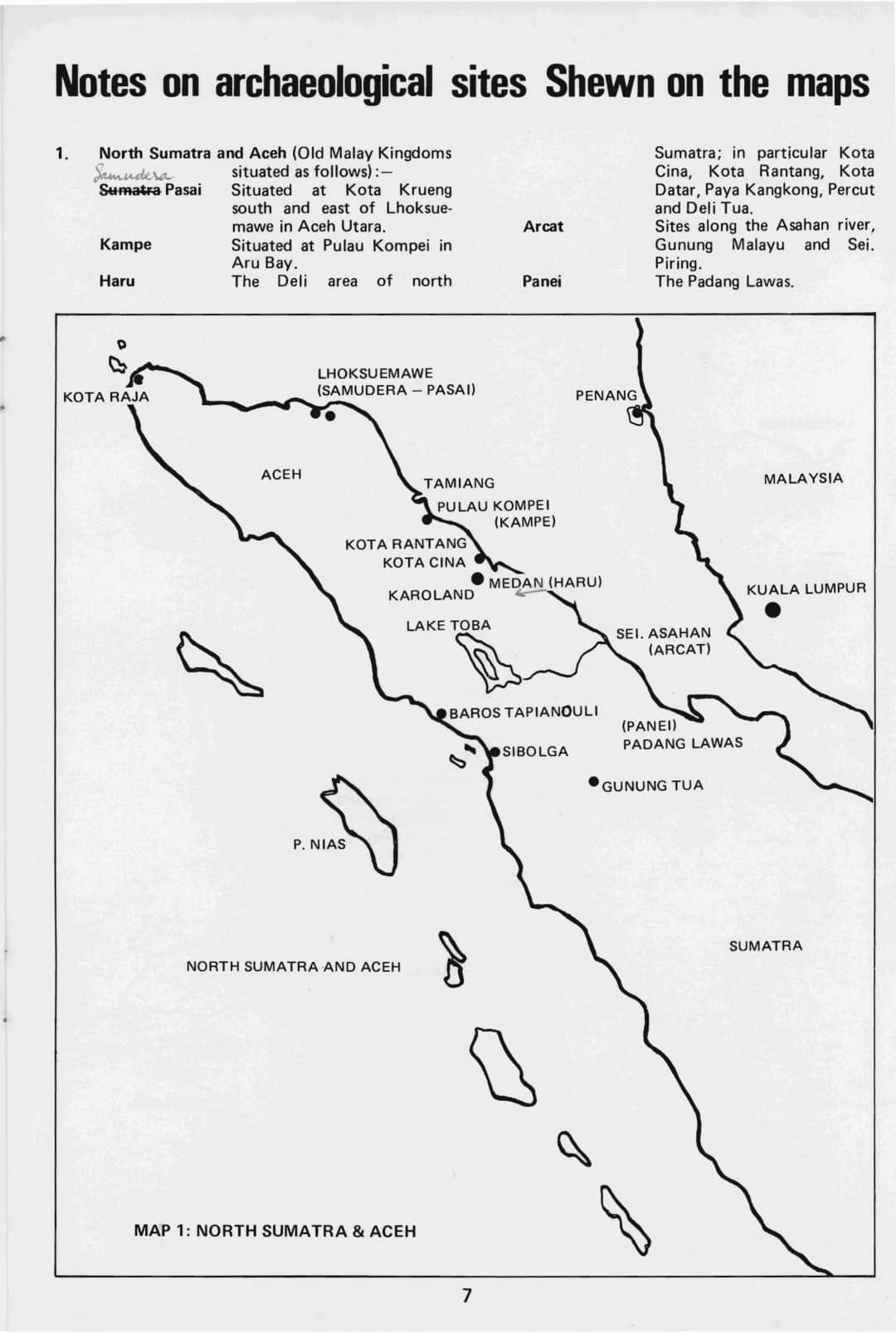 |
Dr. Edwards McKinnon published a research paper in 1977 detailing his findings from Kota Cina. At the time, archaeological knowledge of Chinese ceramics from various kilns was limited, making accurate dating and kiln identification difficult. Additionally, his paper did not include photographs of the ceramic fragments, which would have facilitated later identification. During a conversation with him, he mentioned that the excavated materials from the site could no longer be located. Fortunately, Dr. Miksic was able to preserve some ceramic artifacts from his excavation, now housed in the NUS Museum, though they may not represent the full range of materials originally uncovered.
A reassessment of these sherds, informed by the significant advances in ceramic studies, confirms their alignment with the mid-12th to 13th centuries. Notably, no Yue green ware, Xing white ware, or Changsha ware were present among the finds. These ceramic types were major exports during the Tang dynasty’s first golden phase of trade with Southeast Asia. While Changsha ware ceased exportation after the Five Dynasties period, Yue ware remained an important export into the early Northern Song period.
The ceramics found at Kota Cina align with expectations for the Mid-Northern Song to early Yuan period. The collection includes:
- Zhejiang Longquan and Fujian celadon
- Jingdezhen Qingbai ware
- Fujian Dehua Qingbai/white ware
- Guangdong/Fujian brown-glazed ware
- Fujian Cizao green lead-glazed ware
These fragments feature molded floral decorations. Based on dating from archaeological contexts in China, they originate from the Late Northern Song to Early Southern Song period.
Kota Cina Ceramic fragments on display in Singapore NUS Museum
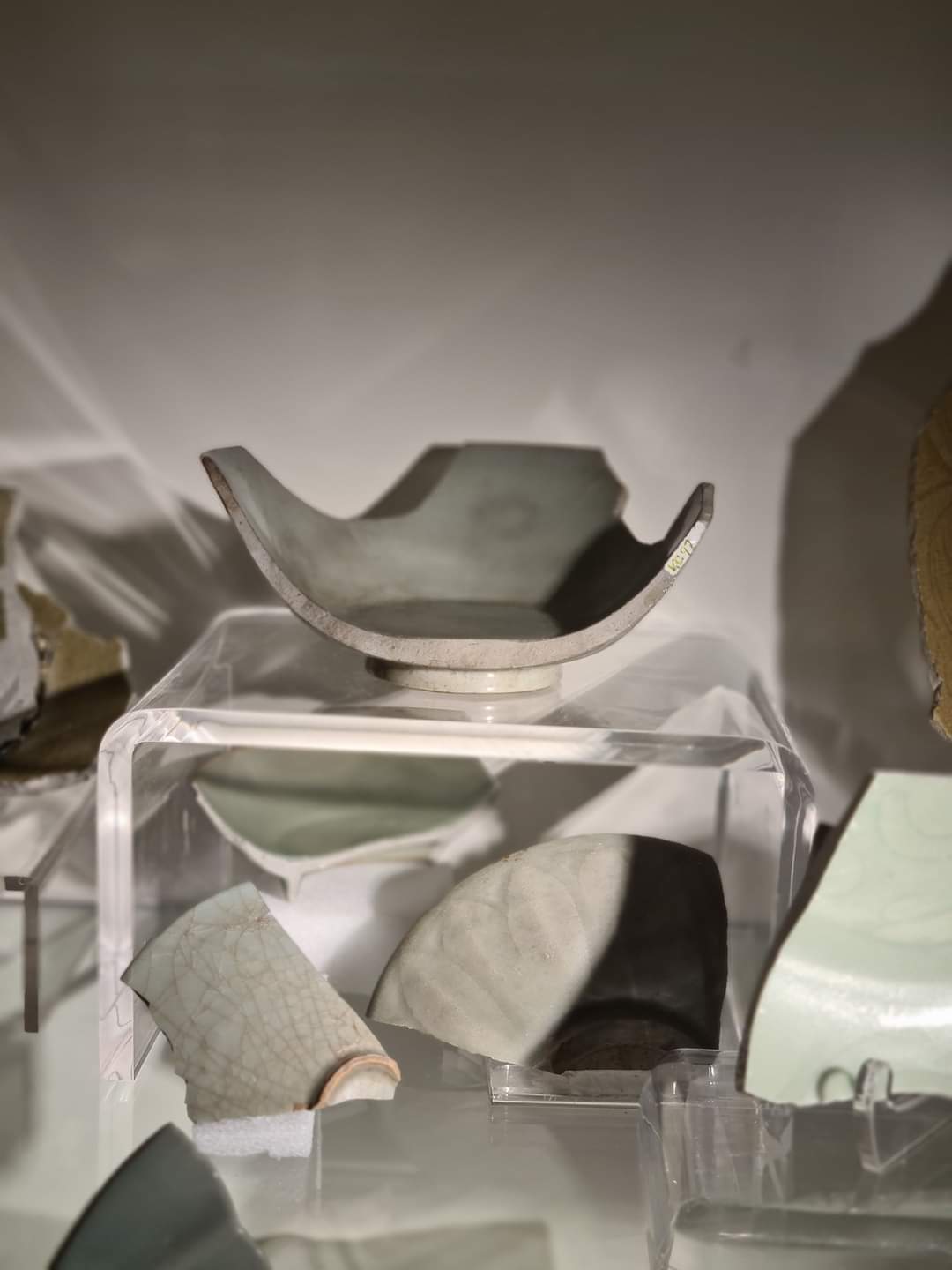 |
| Southern Song Longquan celadon fragments |
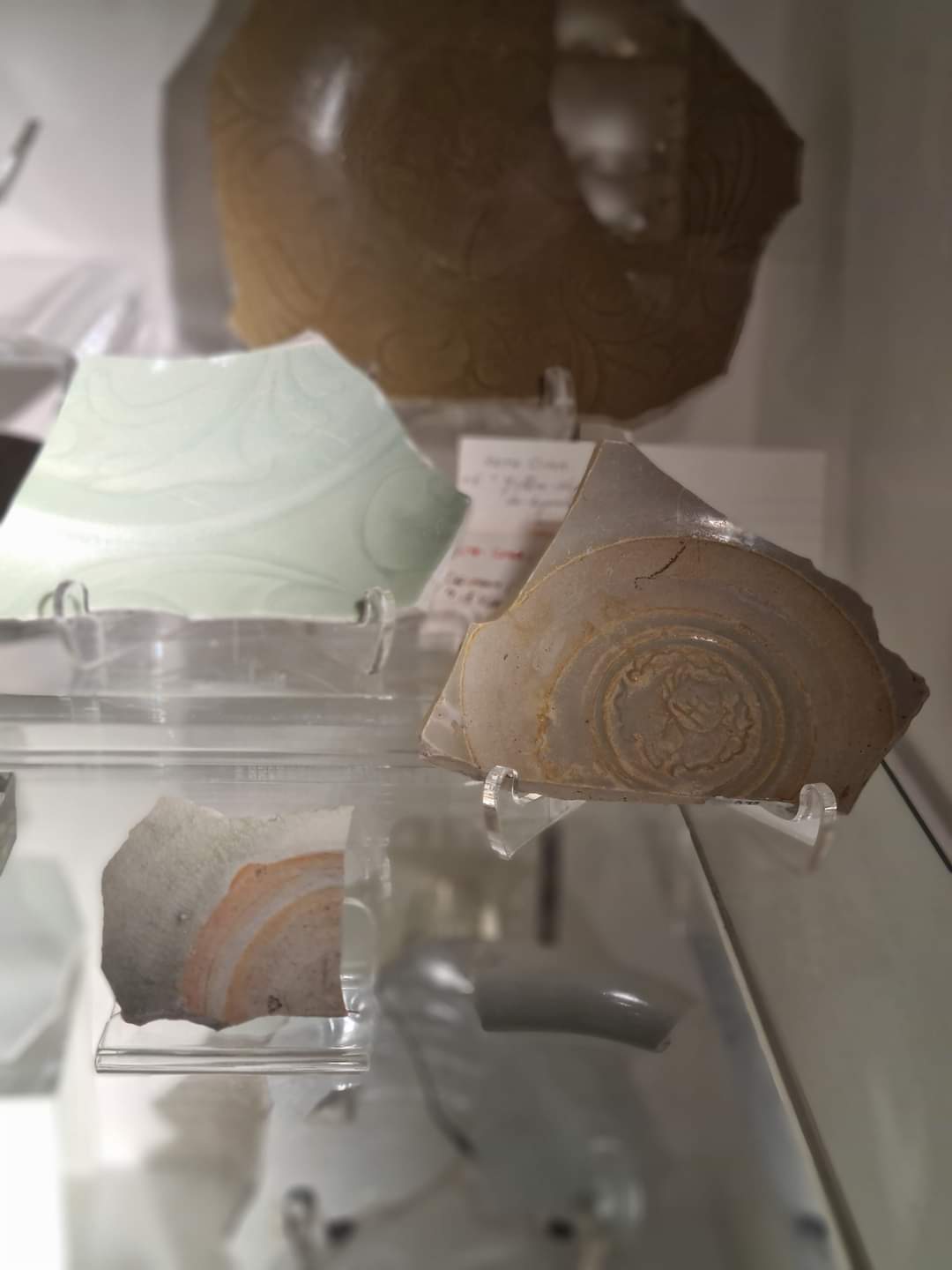 |
Southern Song Longquan Celadon Fragments. The top fragment, with carved/combed decoration, likely dates to the Late Northern Song period. This style originated in Longquan and was widely imitated by Fujian kilns. Below it is an early Yuan Longquan fragment with carved floral scrolls. The piece in the foreground is likely of Fujian kiln origin, dating to the Late Song/Early Yuan period. |
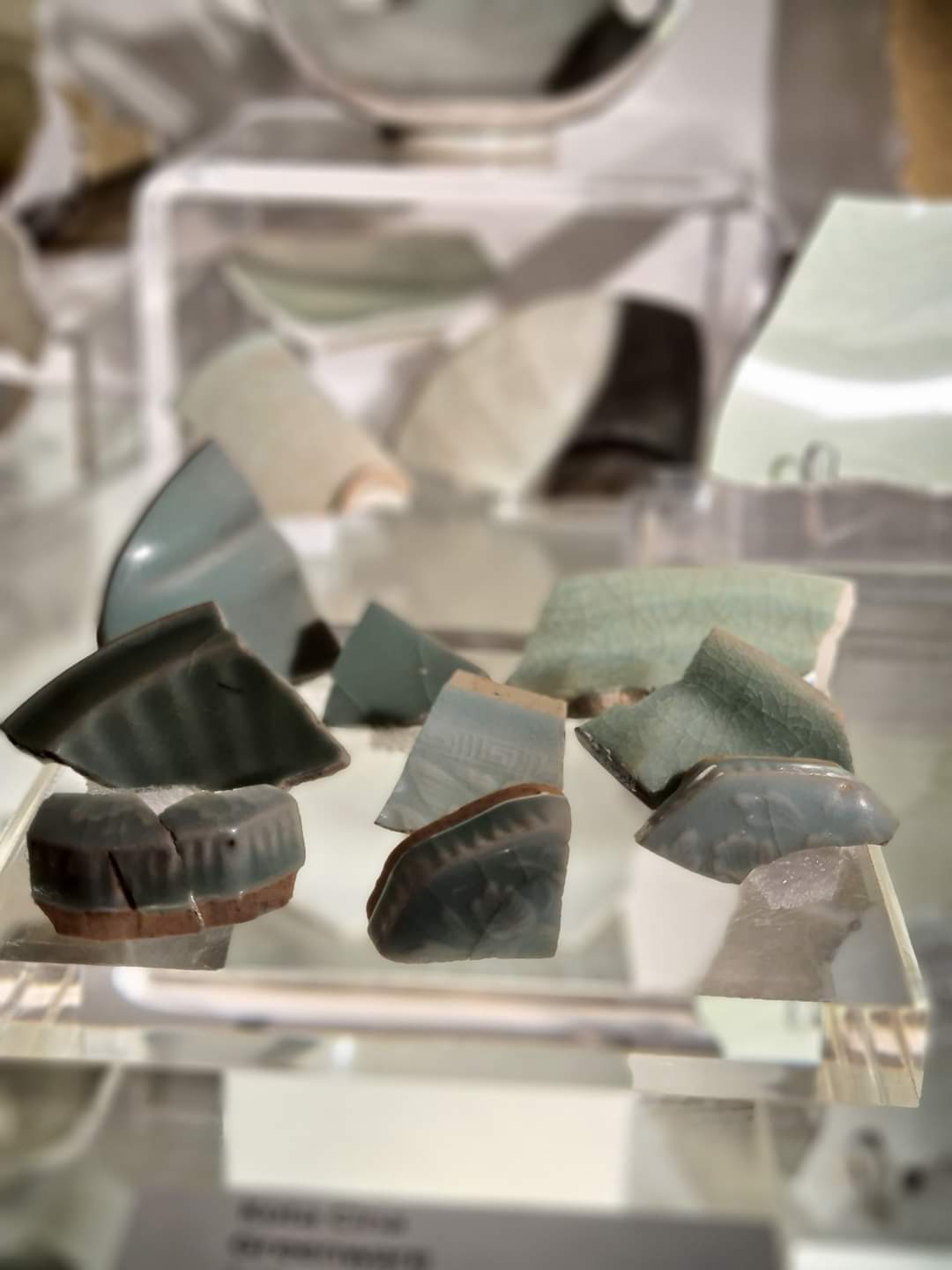 |
| Jingdezhen Qingbai cover box fragments with molded floral decoration. Based on dating from archaeological context in China , they are from late Norhtern Song/early Southern Song period. |
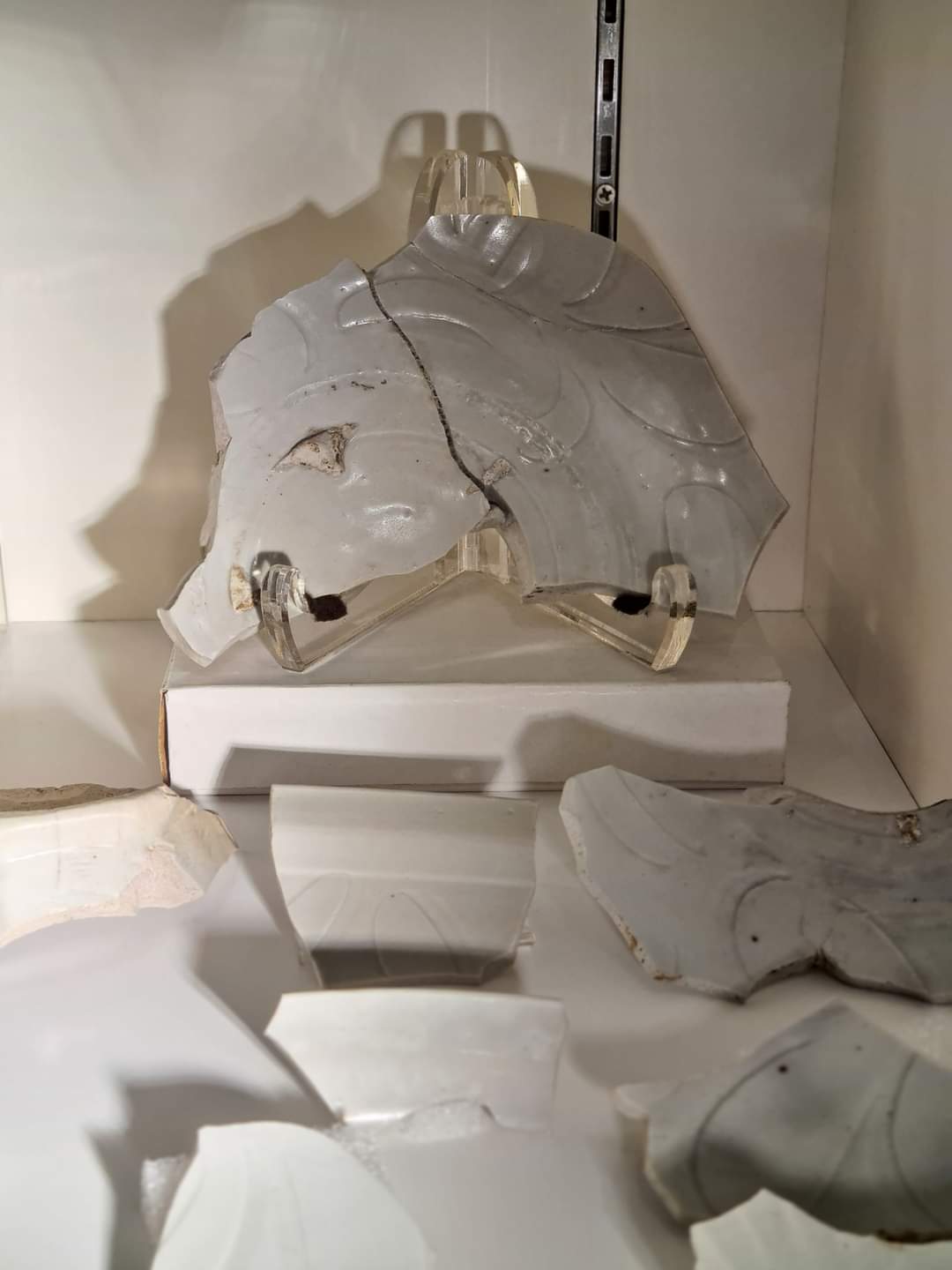 |
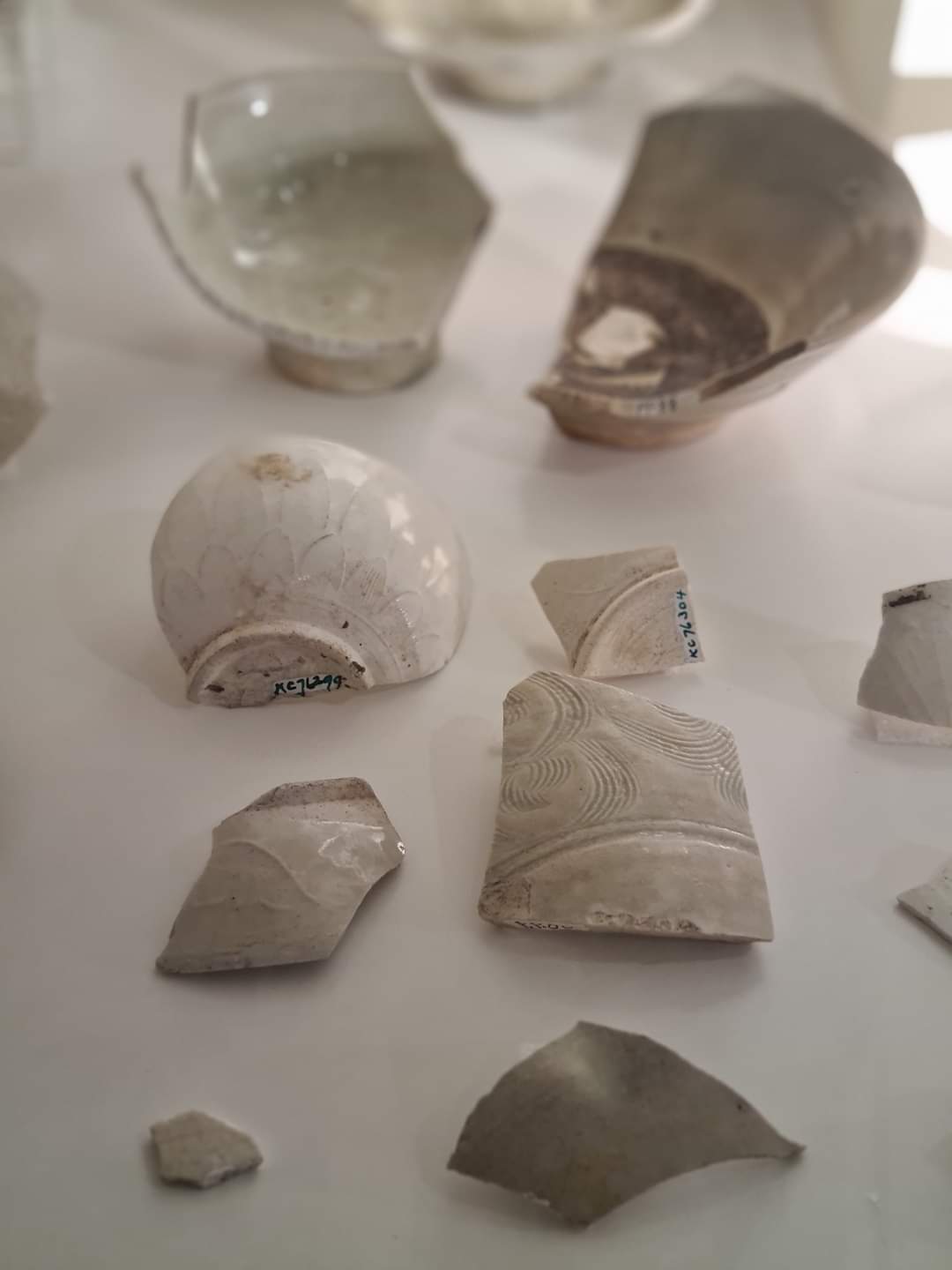 |
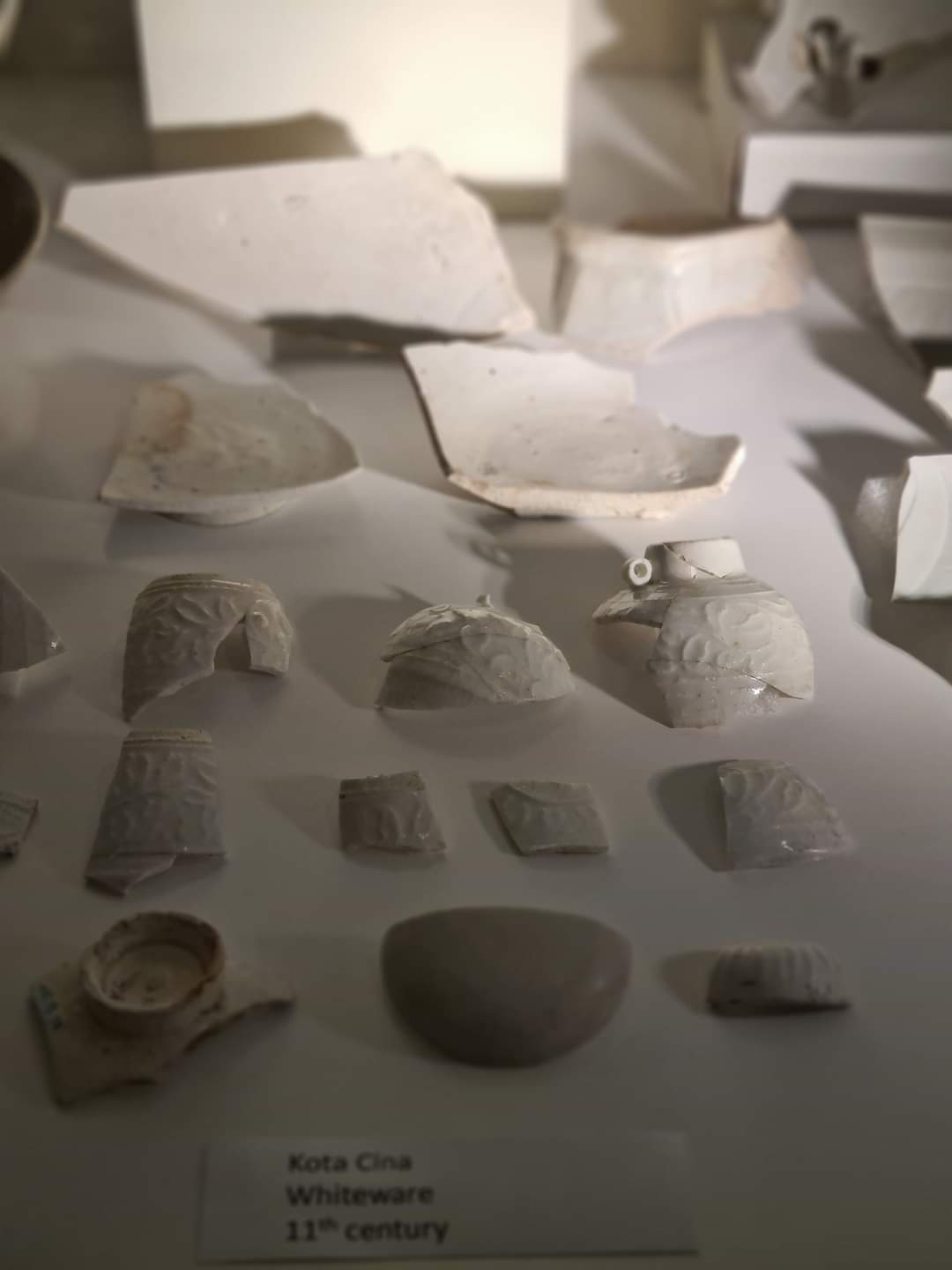 |
Southern Song Dehua White Wares. Some pieces exhibit carved/combed decorations, while others have molded floral patterns. Comparable carved/combed examples have been found in the Java Jepara shipwreck, while the Nanhai 1 shipwreck contained numerous examples with molded decorations. |
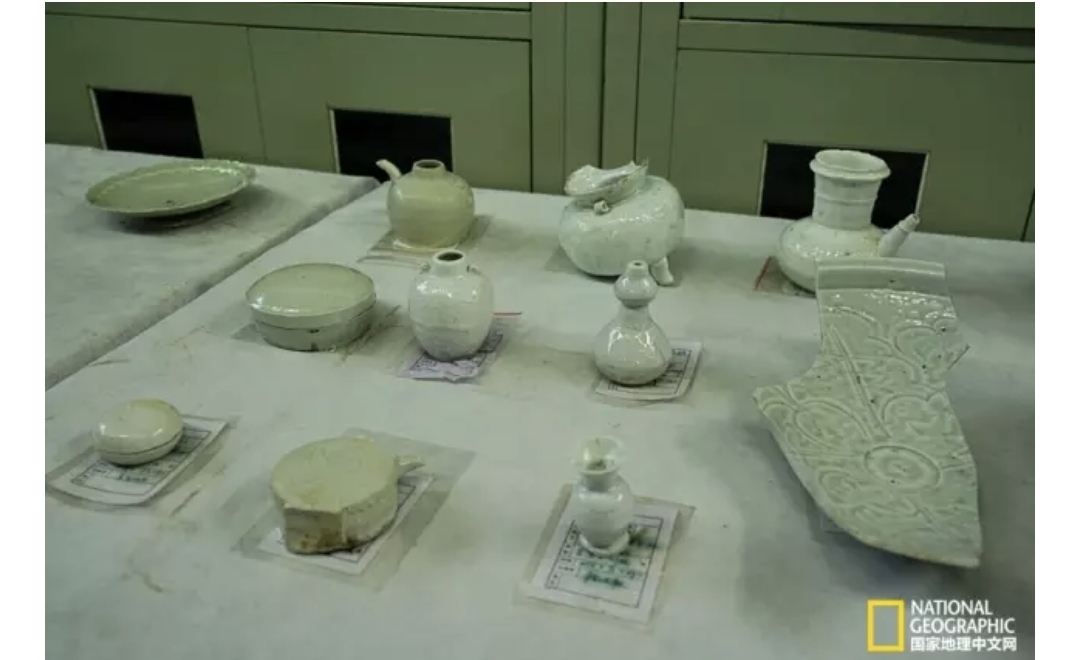 |
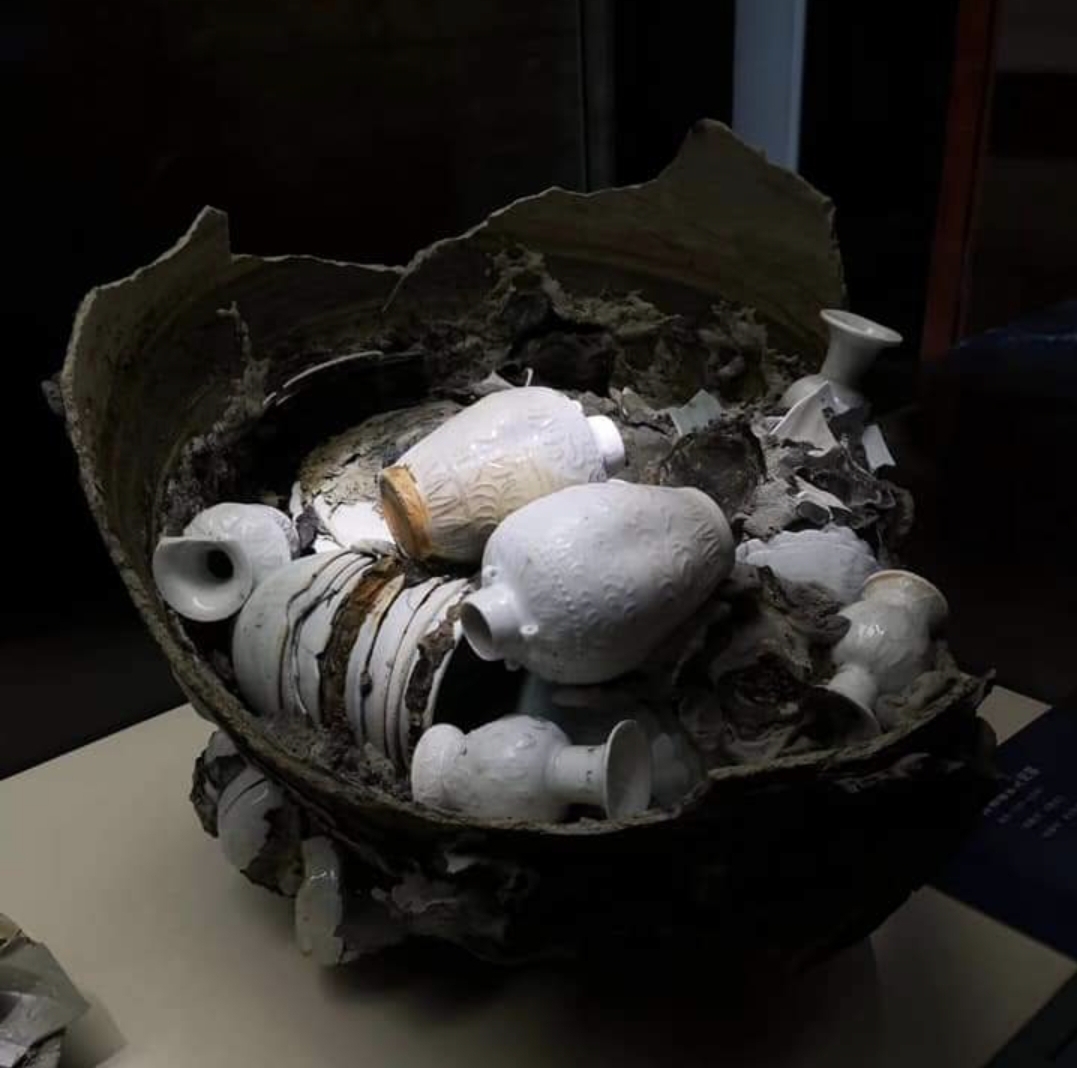 |
Comparable Examples from the Nanhai 1 Wreck
|
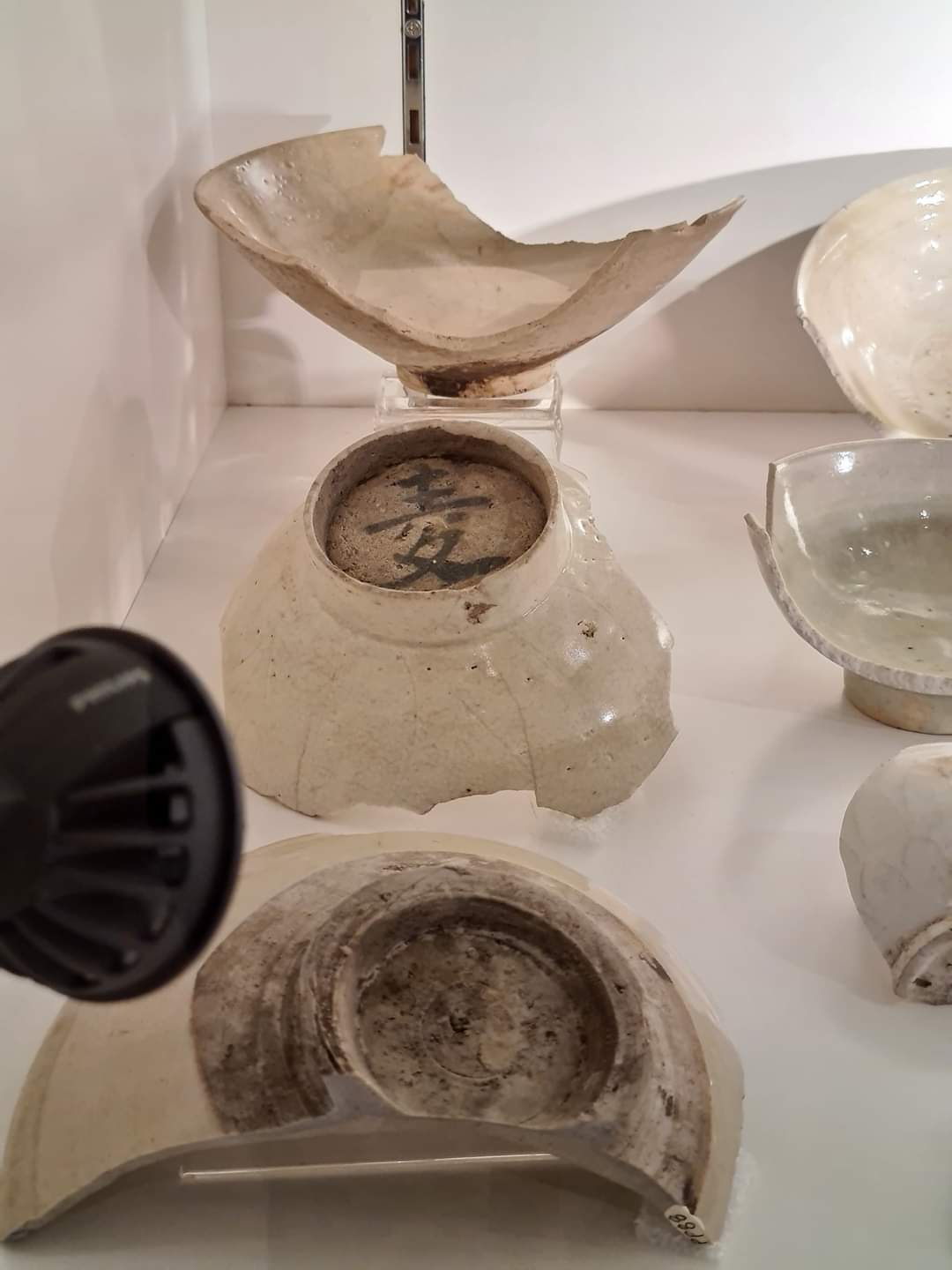 |
|
Bowls with thickened rims, similar to those found in the Lingga and Pulau Buaya shipwrecks, date to the Late Northern Song period. These are likely products of Guangdong kilns or kilns in Southern Fujian. Other bowls from the same period also appear to be of Guangdong/Fujian origin. |
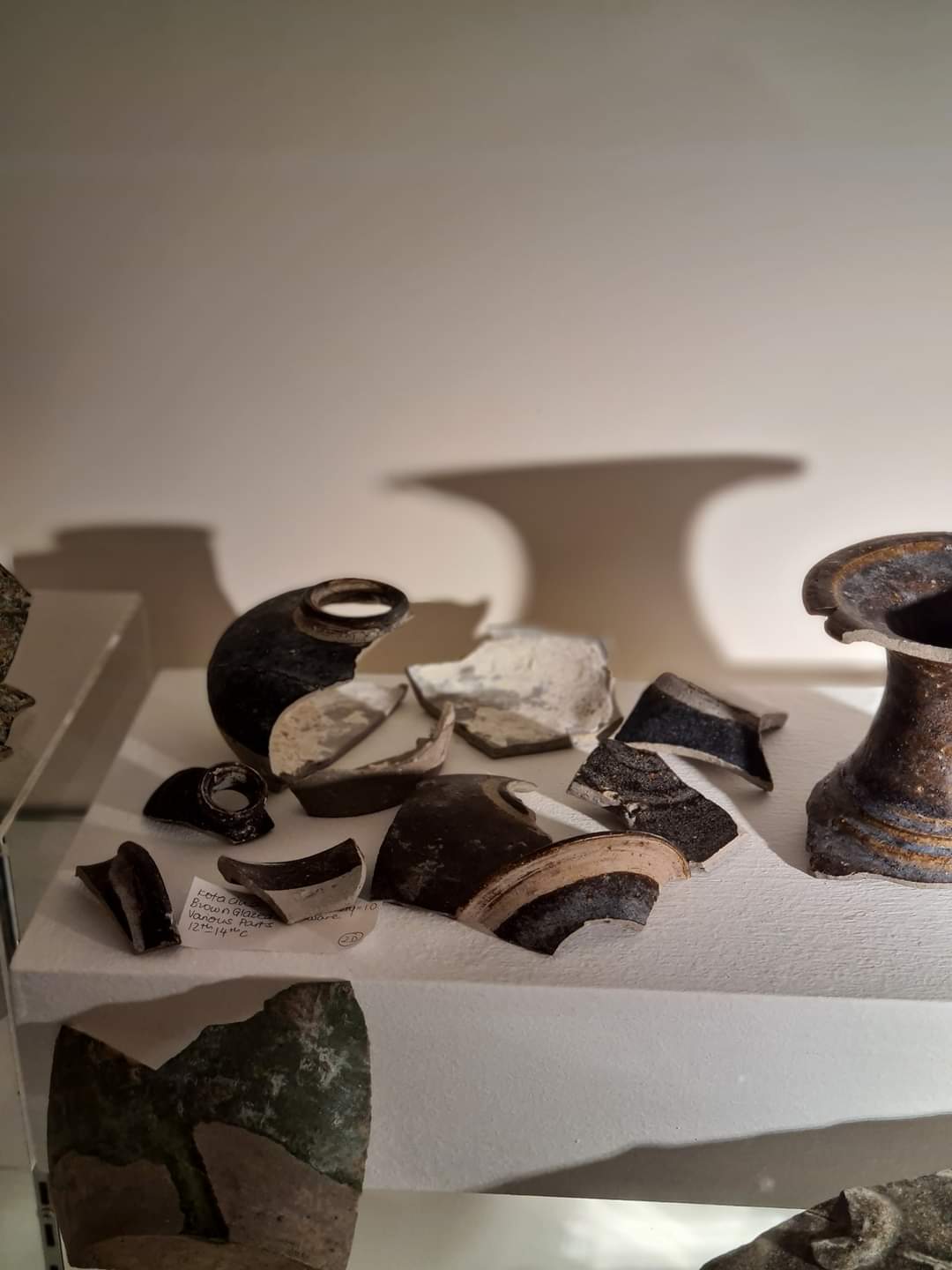 |
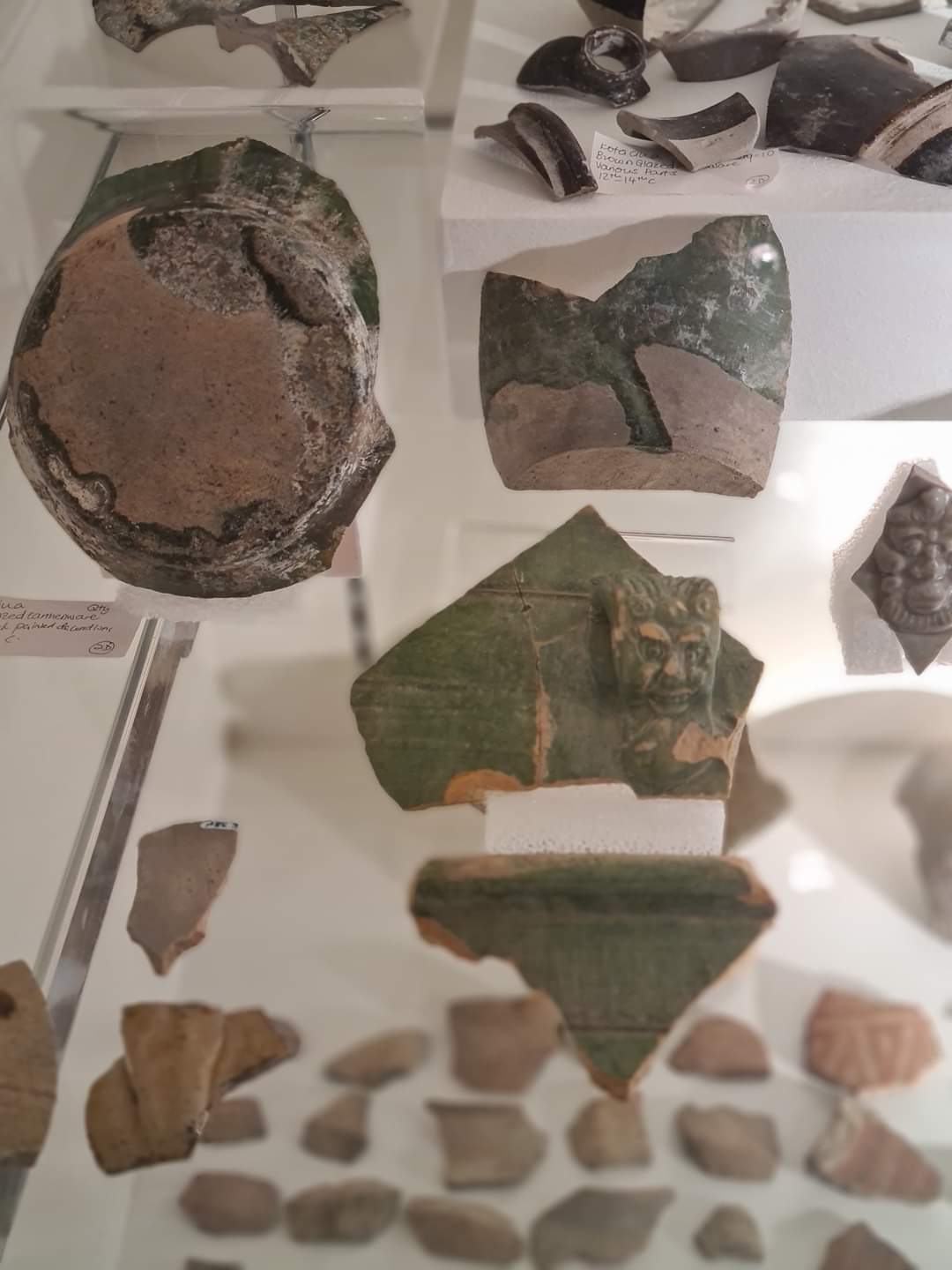 |
| The brown-glazed and lead green-glazed fragments are likely from the Fujian Cizao kiln. Comparable examples have been found in the Southern Song Nanhai 1 wreck. |
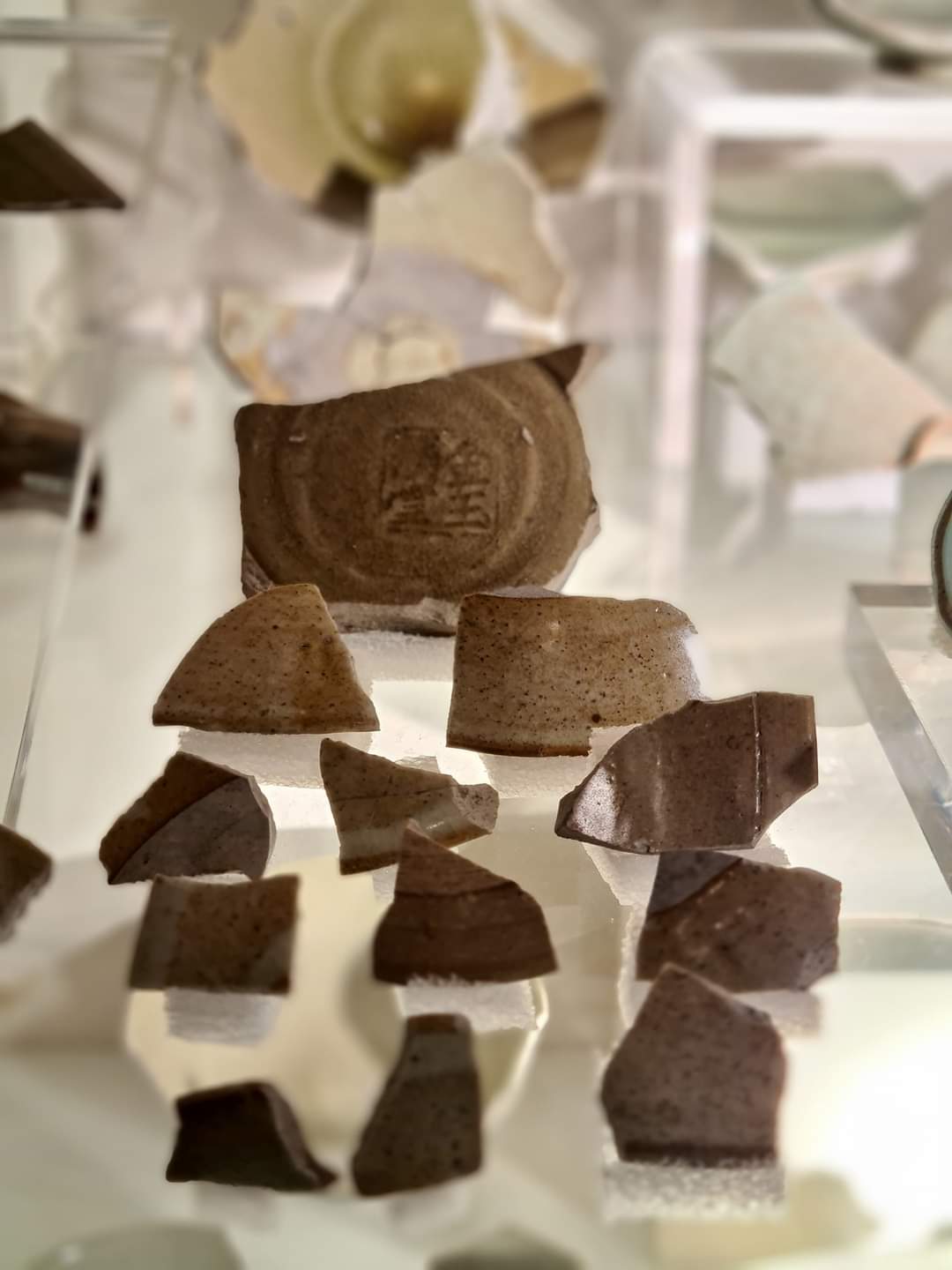 |
Fragment with the Impressed "Jin Yu Mang Tang" (金玉满堂) Mark.This mark was particularly popular on Longquan wares during the Southern Song period, though some examples date to the Yuan dynasty. The kiln origin of this green-glazed fragment is uncertain but may be Fujianese. |
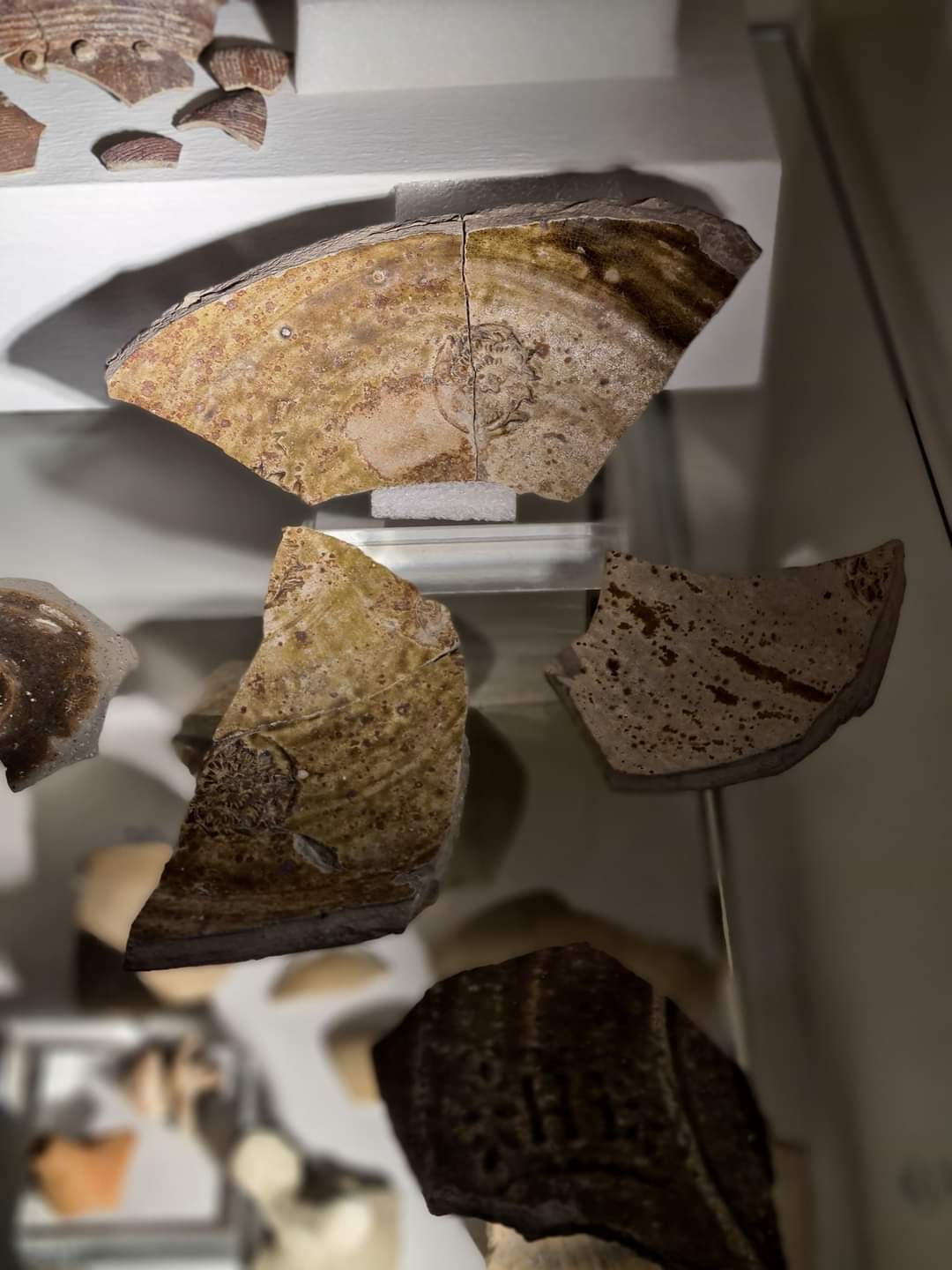 |
Brownish-Green Basin Fragment with Impressed Floral Decoration. Likely a product of the Northern Song Guangdong Xicun kiln. |
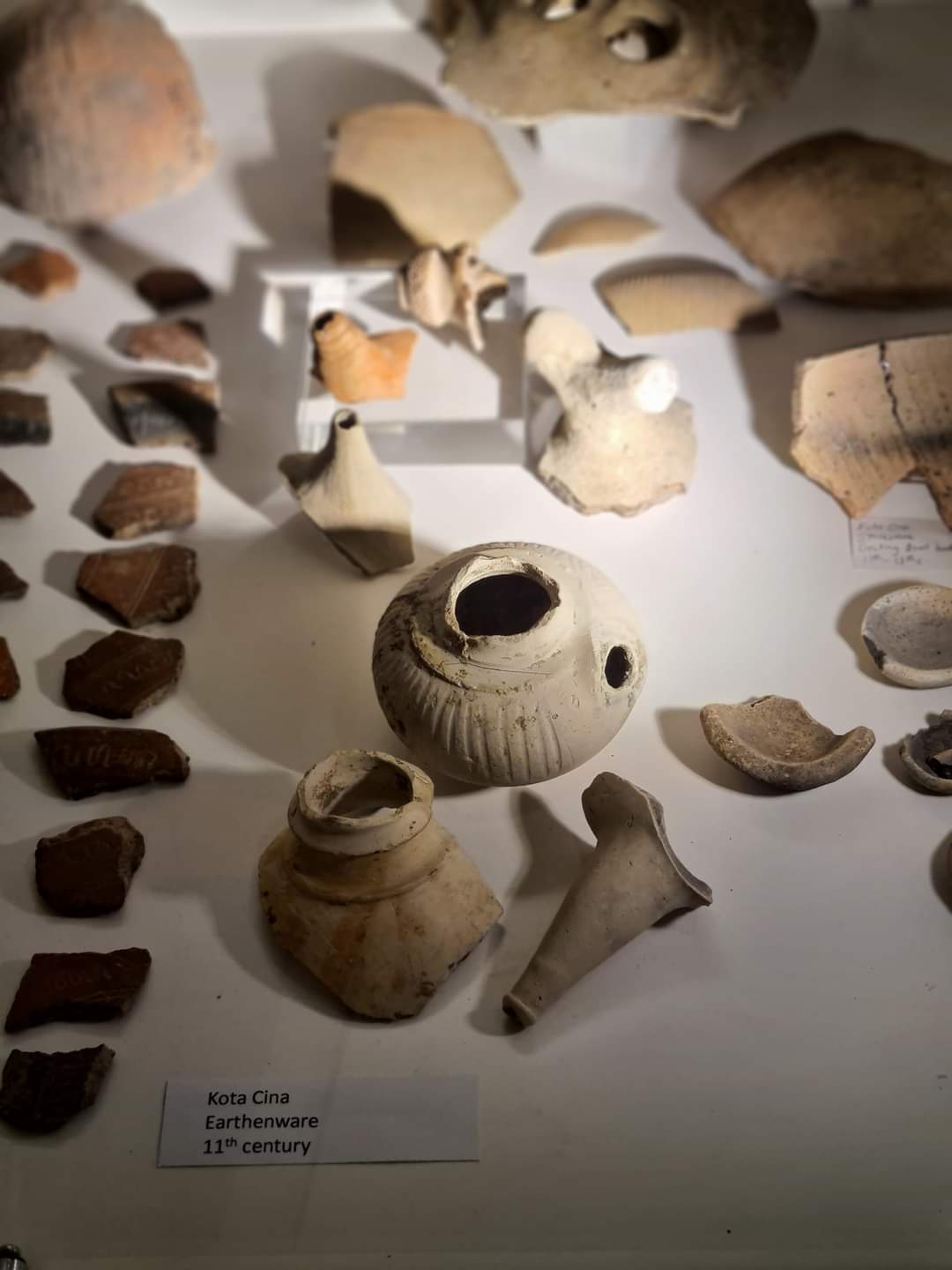 |
Earthenware of Unknown Origin |
Unexpected Finds
Among the sherds were some unexpected discoveries, including:
- Late Northern Song Yaozhou Green-Glazed Ware with carved floral decorations. Yaozhou ware was primarily produced for the Chinese domestic market and was rarely exported.
- Biscuit-Form Zhadou (渣斗) Fragments from the Jiangxi Ganzhou kiln (江西赣州窑).
